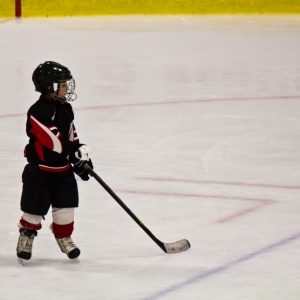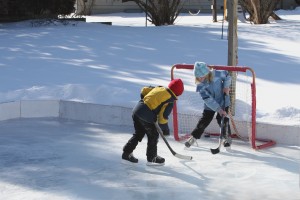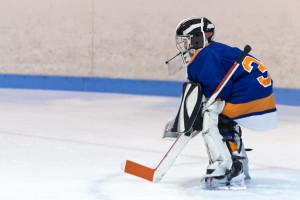Youth Hockey Safety Tips: Reducing Risk At The Rink

All of the grace, speed and athletic skill that kids can muster are on display when they are turned loose at a hockey rink. Indeed, thanks to youthful exuberance and the sport’s beauty, ice time can be a nice time for spectators and youth hockey participants alike. This is especially so when safety is made a priority and no one gets hurt. It is as important as ever to remember there are risks at the rink, because hockey’s popularity among youngsters is climbing. USA Hockey and the National Federation of State High School Associations both recently reported participation gains of about 1.6 percent over the prior year. These kids are on skates, and thus sometimes off-balance. Skates are sharp. The players swing sticks as they try to turn a frozen puck into an unstoppable projectile. They crash into one another, into the boards and onto the ice. They move at high speeds and push their bodies to the point of vulnerability. Injuries are inherent, and it becomes more important to protect players as they grow — as bigger, sturdier, faster-moving bodies are colliding. While most injuries are not serious (bruises are common), a study published in The Journal of the American Medical Association said that concussions accounted for more than 15 percent of injuries among 9- to 16-year-old players. Here are some safety tips to promote youth hockey safety and prevent such injuries.
Ensure the Proper Equipment Is Worn
With all of the safety equipment available, youth hockey players can prevent many injuries. Here are some hockey equipmentt items crucial for maximum safety:
- Hockey helmet. Look for a full facemask to help protect the eyes, plus a protective chin cup and strap, foam lining and proper fitting. Certification by the Hockey Equipment Certification Council is a plus.
- Youth hockey skates. A proper fit is important, as are ankle support and a steel toe. Keep skates sharp to help the player glide over the ice.
- Pads. Shoulders, elbows, knees, hips and shins should be covered. Don’t use pads designed for other sports.
- Hockey pants. These can add a little more padding and should reach the knee.
- Gloves. When considering sizes, shoot for a glove that protects beyond the wrist.
- Athletic supporter and cup. Standard for multiple sports.
- Neck protector. A shot to the neck can knock the wind out of a player — or worse.
- Mouth guard. Some pros say losing teeth is part of the game. That shouldn’t hold true in youth hockey.
- Goalie gear. Add wider leg and arm pads, a chest protector and a glove to the above.
Check (Safely), Please
Checking is when a player intentionally bumps into a foe or hits the foe’s stick to stop a rush up the ice. Body checks in leagues below the 13- to 14-year-old level have been banned in USA Hockey. A study had found that in leagues that allowed body checking, there was a three-fold increase in the likelihood of 11- to 12-year-olds suffering a severe injury. In leagues that allow checking, players should be instructed on how to absorb contact. Also, a player should never lower his or her head near the boards, nor lead with the head on a body check. Avoiding a headfirst crash reduces the likelihood of suffering a concussion or spinal injury.
Warm Up
As with any activity, stretching and warming up can help prevent strains, sprains and pulls.
Teach Sportsmanship
Understanding this life skill can take some of the reckless abandon out of collisions, and also reduce fighting.
Enforce the Rules
Safety concerns are behind many rules, such as those that disallow tripping, hooking, slashing, high-sticking, cross-checking, roughing, boarding, and especially checking from behind. A zero-tolerance policy for fighting can’t hurt.
Consider Force-Dissipating Boards
Thanks to manufacturing advances, boards that absorb some of the impact when a player is driven into them can be installed.
Keep Basics Handy
A first-aid kit, an automated external defibrillator (and someone who knows how to use it) and an emergency medical plan are musts.
Be Mindful Outdoors
If someone is to play on a frozen pond, make sure it is indeed frozen. Skating on thin ice could be fatal. Protect against both frostbite and exposure to the sun’s UV rays, too. A comfortable, proper-fitting uniform can help players stay focused while also keeping their equipment from being exposed. Cisco Athletic can customize top-quality ice hockey uniforms, creating them from a variety of fabrics. We can literally create hundreds of unique designs, as well. If you have a question about hockey uniforms, call us today at (410) 325-4800.



